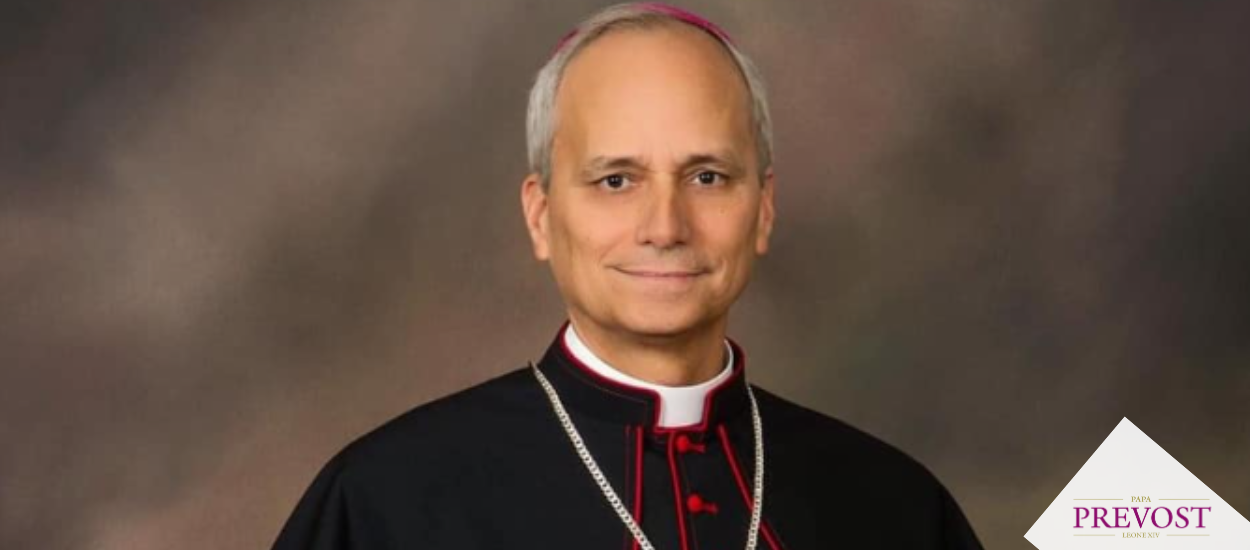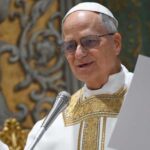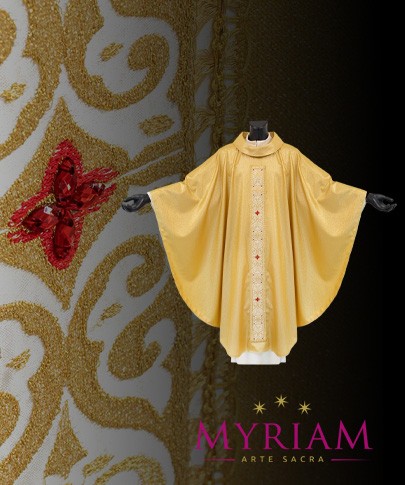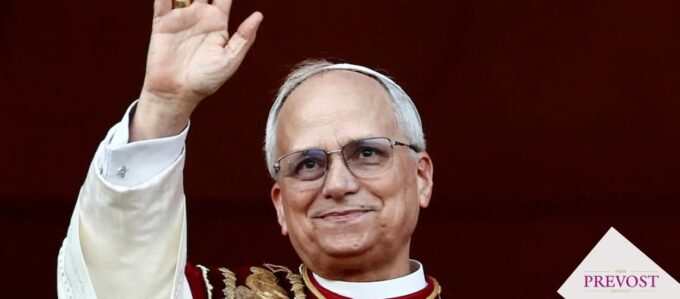Pope Leo XIV, 69 years old as of September, was chosen as the successor to Pope Francis during a time of great change for the Catholic Church. His election sparked much curiosity, especially regarding his pre-papal life and experiences.
Who was Pope Leo XIV really before ascending to the papal throne? Here’s a brief biography of the Holy Father, starting from his origins, moving through his education, public works, and ideas on the Church and society.
Pope Leo XIV: The Origins
Pope Leo XIV, born as Robert Francis Prevost, was elected as the new Bishop of Rome on May 8, 2025 at 18:07. His story begins in the United States, when Mildred Martinez, of Spanish descent, gave birth to little Robert on September 14, 1955 in Chicago, Illinois. His father, Louis Marius Prevost, on the other hand, had Italian and French roots and was the school superintendent for the southern district of District 169.
His mother completed her studies in library science at DePaul University, where she earned her degree in 1947 at the age of 34, and later specialized with a master’s in education two years later. Along with Robert, the couple had two other children, Louis Martín and John Joseph.
Robert attended St. Mary of the Assumption school in the southern part of Chicago. A photo from November 1962 shows him at seven years old, standing with his classmates, dressed in a white shirt and a tie.
Education and Studies
Robert Francis grew up in the United States, where he began his educational journey first at the Minor Seminary of the Augustinians and later at Villanova University in Pennsylvania. There he earned a degree in Mathematics in 1977 and began studying philosophy. That same year, he joined the Order of Saint Augustine (OSA) in Saint Louis as a novice: it was here that he made his first profession and took his solemn vows in the summer of 1981.
After completing his studies in theology at the Catholic Theological Union of Chicago, he was transferred to Rome to study canon law at the Pontifical University of St. Thomas Aquinas (Angelicum). It was in the Eternal City that he was ordained a priest in 1982 by Monsignor Jean Jadot in the Chapel of Saint Monica at the Augustinian College.
After earning his licentiate in canon law, he was sent on a mission to Peru, to Chulucanas, where he spent a year. He then presented his doctoral thesis entitled “The Role of the Local Prior in the Order of Saint Augustine” and was appointed director of vocations and missions for the Augustinian Province “Mother of Good Counsel” in Olympia Fields, Illinois.
Service to the Church and Missions
Before his election, Pope Leo XIV served the Church for many years, holding various positions within the clergy and in the missions.
In 1988, Prevost was sent to Trujillo, where he spent a decade as prior of the community and a formator for young Augustinians. His missionary experience in Latin America, immersed in the daily hardships of a people often forgotten, shaped his pastoral vision, grounded in a Gospel lived among the people. During this time, he also held academic positions, such as professor of canon law and moral theology. The growing responsibility he assumed is reflected in the roles he would later take on: in 1999, he became provincial prior, and in 2001, he was elected prior general of the Augustinian Order, a position he held until 2013.
His personality did not go unnoticed, even by Pope Francis, who appointed him apostolic administrator of Chiclayo in 2014, still in Peru, effectively elevating him to the episcopate. As a recognition of his strong influence in the ecclesiastical landscape of Latin America, in 2023 he became prefect of the Dicastery for Bishops in Rome and president of the Pontifical Commission for Latin America.
His attention to social and humanitarian issues led to Pope Leo XIV being seen as a leader capable of combining deep spirituality with pragmatism to face the contemporary challenges of the Church.
Election to the Papacy
The election of Pope Leo XIV represented a continuity of the pastoral mission begun by his predecessor, Pope Francis. His appointment was received with great hope, given his proven experience in serving communities and his vision of a Church that actively engages on all social fronts.
Although his path had been largely tied to the Latin American Church up to that point, his mix of origins and international formation made him the ideal person to bridge the different facets of the Catholic Church, uniting the global north and south, and reconciling progressive and conservative views.
The Choice of the Name and the Motto
The choice of the name Leo XIV was widely debated in the media, who hosted various experts and held extensive discussions on the matter. It is, in fact, a decision that reflects the Holy Father’s reference models and can help us define the priorities of his pontificate.
The name Leo carries a long and significant tradition in the Church, evoking emblematic figures such as Leo the Great and Leo XIII. The latter is particularly remembered for his commitment to social justice and for his ability to modernize the Church with wisdom and balance.
Although it is unclear whether the new pope was directly inspired by Leo XIII, the choice of this name suggests a desire to continue the reform efforts initiated by Pope Francis, but with a more cautious and conciliatory approach. This could announce a pontificate characterized by stability, gradual reforms, and a measured response to the challenges the Church faces in the modern world.
The episcopal motto is also in line with this conciliatory vision: “In Illo uno unum”, a direct reference to Saint Augustine, who uttered it during a sermon on Psalm 127. “In Him, we are all one”, emphasizing the unity of Christians in Christ.
The pope explained: «Unity and communion are part of the charism of the Order of Saint Augustine and also of my way of acting and thinking. I think it is very important to promote communion in the Church, and we know that communion, participation, and mission are the three key words of the Synod». It is no coincidence that the first speech of Pope Leo XIV was focused on hope and the will to work with bishops and priests to build a stronger and united Christian community.
What are the new Pope’s ideas?
Pope Prevost’s pastoral vision aims to make the Church closer to the people, facing modern challenges with a more inclusive and dynamic approach. Exactly in line with what was initiated by Pope Francis. The core themes remain the same: environment, peace, and migration.
But what does Pope Leo XIV think about the environment and climate change? The Bishop of Rome has emphasized the importance of a “relationship of reciprocity” with nature, sharply criticizing any form of “tyrannical domination” over the environment: it is time for the world to move “from words to actions”.
His idea of peace is equally clear: his first speech as pope placed “peace” at the center, a clear sign of his commitment to building bridges between the different factions of the world. His background as a missionary in Peru has made him particularly sensitive to the issues of migration. He harshly criticized the rigid and nationalist migration policies, such as those of the Trump administration, which exacerbate social inequalities.
However, he has also turned his attention to more earthly matters, envisioning a series of interventions to streamline and make the administrative machinery of the Holy See more transparent. It will be interesting to see if and how he will manage to change the Roman Curia, a goal that has always been pursued in past papacies.









